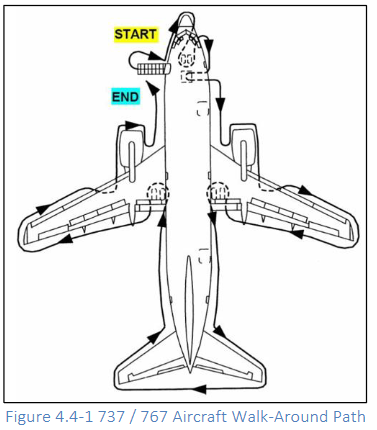Title Page
-
Site conducted
-
Conducted on
-
Auditor
-
Site
-
Gate Number
-
Gate Number
-
Gate Number
-
Gate Number
-
Gate Number
-
Gate Number
-
Gate Number
-
Gate Number
-
Tail Number
- N1013A
- N1049A
- N1093A
- N1181A
- N1229A
- N1321A
- N1327A
- N1361A
- N1373A
- N1381A
- N1399A
- N1409A
- N1427A
- N1439A
- N1487A
- N1489A
- N1499A
- N1709A
- N1997A
- N227AZ
- N229AZ
- N233AZ
- N239AZ
- N241AZ
- N307AZ
- N311AZ
- N313AZ
- N317AZ
- N331AZ
- N337AZ
- N347AZ
- N353AZ
- N359AZ
- N367AZ
- N379AZ
- N381AN
- N389AZ
- N397AZ
- N409AZ
- N419AZ
- N431AZ
- N432AX
- N433AZ
- N443AZ
- N449AZ
- N457AZ
- N459AZ
- N479AZ
- N491AZ
- N499AZ
- N5113A
- N5147A
- N5153A
- N5167A
- N5179A
- N5209A
- N5227A
- N5233A
- N5237A
- N5261A
- N5479A
- N5683A
- N5693A
- N617AZ
- N641AZ
- N714AX
- N739AX
- N744AX
- N749AX
- N750AX
- N761CX
- N762CX
- N763CX
- N768AX
- N774AX
- N7901A
- N7907A
- N7919A
- N791AX
- N7933A
- N7949A
- N795AX
- N8011A
- N8059A
- N919AZ
- N929AZ
- N937AZ
- N947AZ
- N967AZ
-
What aircraft type is this?
-
Please observe a minimum of 3 observations when answering the below questions (as applicable)
Aircraft Loading
-
Two (2) Associates are utilized to move ULDs within the aircraft. Associates are only allowed to push the ULDs on the same side while loading the aircraft (AGOM 4.11.4.2)
-
ULDs checked for damage to ensure airworthiness and all restraining devices (locks, straps, curtains are properly secured before ULD is loaded (AGOM 4.11.4.1) (AGOM 4.11.4.2)
-
All empty ULDs must be physically verified to be empty before positioning on the aircraft (AGOM 4.11.4.9)
-
Verifier physically walks ULDs into position and inspects lock positions (AGOM 4.10.5.6/4.11.4.9)
-
AA’s not actively loading stay 20 feet away from loader when elevator raised more than six (6) feet (AGOM 3.4.10.1)
-
AA actively loading remain eight (8) feet from loader chassis while elevator is raising/lowering (AGOM 3.4.10.1)
-
ULDs (AKE/DQF/DPE) moved to/from the deck or dolly at a 45-degree angle (AGOM 3.4.11)
- All compliant
- One ULD non-compliant
- More than one ULD non-compliant
- N/A
-
Bulk bins have the required two (2) inch gap for fire suppression system (AGOM 4.11.2) (Please select all that apply)
- No bulk loaded
- 737 FWD compliant
- 737 FWD non-compliant
- 737 AFT compliant
- 737 AFT non-compliant
- N/A
-
ULDs (AAX / LAY only) for aircraft bulk loading will be positioned with the curtain side resting on the exterior locks. No gap between<br>the ULD and the dolly edge (AGOM 3.3.2.4)
Departure
-
-
Departure walk around completed clockwise with photos of doors and flashlight used if insufficient lighting (AGOM 4.12.3)
-
15 minutes prior to aircraft arrival and departure, conduct a FOD walk of the aircraft parking area, removing any FOD found. FOD walks must consist of the ground operations Associates walking at arms-length along the entire aircraft parking area, removing foreign objects (AGOM 3.3.7)
-
Observe AAs wearing hearing protection during departure and select the answer that best applies (AGOM 3.3.2.2)
- All AAs wearing hearing protection
- One AA not wearing hearing protection
- More than one AA not wearing hearing protection
- N/A
-
Ensures safety cones remain in place until completion of all GSE activities around the aircraft and air stairs have been remove from the safety envelope. (AGOM 4.6.1)
-
Safety envelope is clear prior to pushback (AGOM 4.12.2)
Aircraft Loading
-
Two (2) Associates are utilized to move ULDs within the aircraft. Associates are only allowed to push the ULDs on the same side while loading the aircraft (AGOM 4.11.4.2)
-
ULDs checked for damage to ensure airworthiness and all restraining devices (locks, straps, curtains are properly secured before ULD is loaded (AGOM 4.11.4.1) (AGOM 4.11.4.2)
-
All empty ULDs must be physically verified to be empty before positioning on the aircraft (AGOM 4.11.4.9)
-
Verifier physically walks ULDs into position and inspects lock positions (AGOM 4.10.5.6/4.11.4.9)
-
AA’s not actively loading stay 20 feet away from loader when elevator raised more than six (6) feet (AGOM 3.4.10.1)
-
AA actively loading remain eight (8) feet from loader chassis while elevator is raising/lowering (AGOM 3.4.10.1)
-
ULDs (AKE/DQF/DPE) moved to/from the deck or dolly at a 45-degree angle (AGOM 3.4.11)
- All compliant
- One ULD non-compliant
- More than one ULD non-compliant
- N/A
-
Bulk bins have the required two (2) inch gap for fire suppression system (AGOM 4.11.2) (Please select all that apply)
- No bulk loaded
- 767-200 compliant
- 767-200 non-compliant
- N/A
-
ULDs (AAX / LAY only) for aircraft bulk loading will be positioned with the curtain side resting on the exterior locks. No gap between<br>the ULD and the dolly edge (AGOM 3.3.2.4)
Departure
-
-
Departure walk around completed clockwise with photos of doors and flashlight used if insufficient lighting (AGOM 4.12.3)
-
FOD walk conducted prior to aircraft departure at arm’s length (AGOM 4.12.2)
-
Observe AAs wearing hearing protection during departure and select the answer that best applies (AGOM 3.3.2.2)
- All AAs wearing hearing protection
- One AA not wearing hearing protection
- More than one AA not wearing hearing protection
- N/A
-
Ensures safety cones remain in place until completion of all GSE activities around the aircraft and air stairs have been remove from the safety envelope. (AGOM 4.6.1)
-
Safety envelope is clear prior to pushback (AGOM 4.12.2)
Aircraft Loading
-
Two (2) Associates are utilized to move ULDs within the aircraft. Associates are only allowed to push the ULDs on the same side while loading the aircraft (AGOM 4.11.4.2)
-
ULDs checked for damage to ensure airworthiness and all restraining devices (locks, straps, curtains are properly secured before ULD is loaded (AGOM 4.11.4.1) (AGOM 4.11.4.2)
-
All empty ULDs must be physically verified to be empty before positioning on the aircraft (AGOM 4.11.4.9)
-
Verifier physically walks ULDs into position and inspects lock positions (AGOM 4.10.5.6/4.11.4.9)
-
AA’s not actively loading stay 20 feet away from loader when elevator raised more than six (6) feet (AGOM 3.4.10.1)
-
AA actively loading remain eight (8) feet from loader chassis while elevator is raising/lowering (AGOM 3.4.10.1)
-
ULDs (AKE/DQF/DPE) moved to/from the deck or dolly at a 45-degree angle (AGOM 3.4.11)
- All compliant
- One ULD non-compliant
- More than one ULD non-compliant
- N/A
-
Bulk bins have the required two (2) inch gap for fire suppression system (AGOM 4.11.2) (Please select all that apply)
- No bulk loaded
- 767-300 compliant
- 767-300 non-compliant
- N/A
-
ULDs (AAX / LAY only) for aircraft bulk loading will be positioned with the curtain side resting on the exterior locks. No gap between<br>the ULD and the dolly edge (AGOM 3.3.2.4)
Departure
-
-
Departure walk around completed clockwise with photos of doors and flashlight used if insufficient lighting (AGOM 4.12.3)
-
FOD walk conducted prior to aircraft departure at arm’s length (AGOM 4.12.2)
-
Observe AAs wearing hearing protection during departure and select the answer that best applies (AGOM 3.3.2.2)
- All AAs wearing hearing protection
- One AA not wearing hearing protection
- More than one AA not wearing hearing protection
- N/A
-
Ensures safety cones remain in place until completion of all GSE activities around the aircraft and air stairs have been remove from the safety envelope. (AGOM 4.6.1)
-
Safety envelope is clear prior to pushback (AGOM 4.12.2)
-
Additional comments/observations













